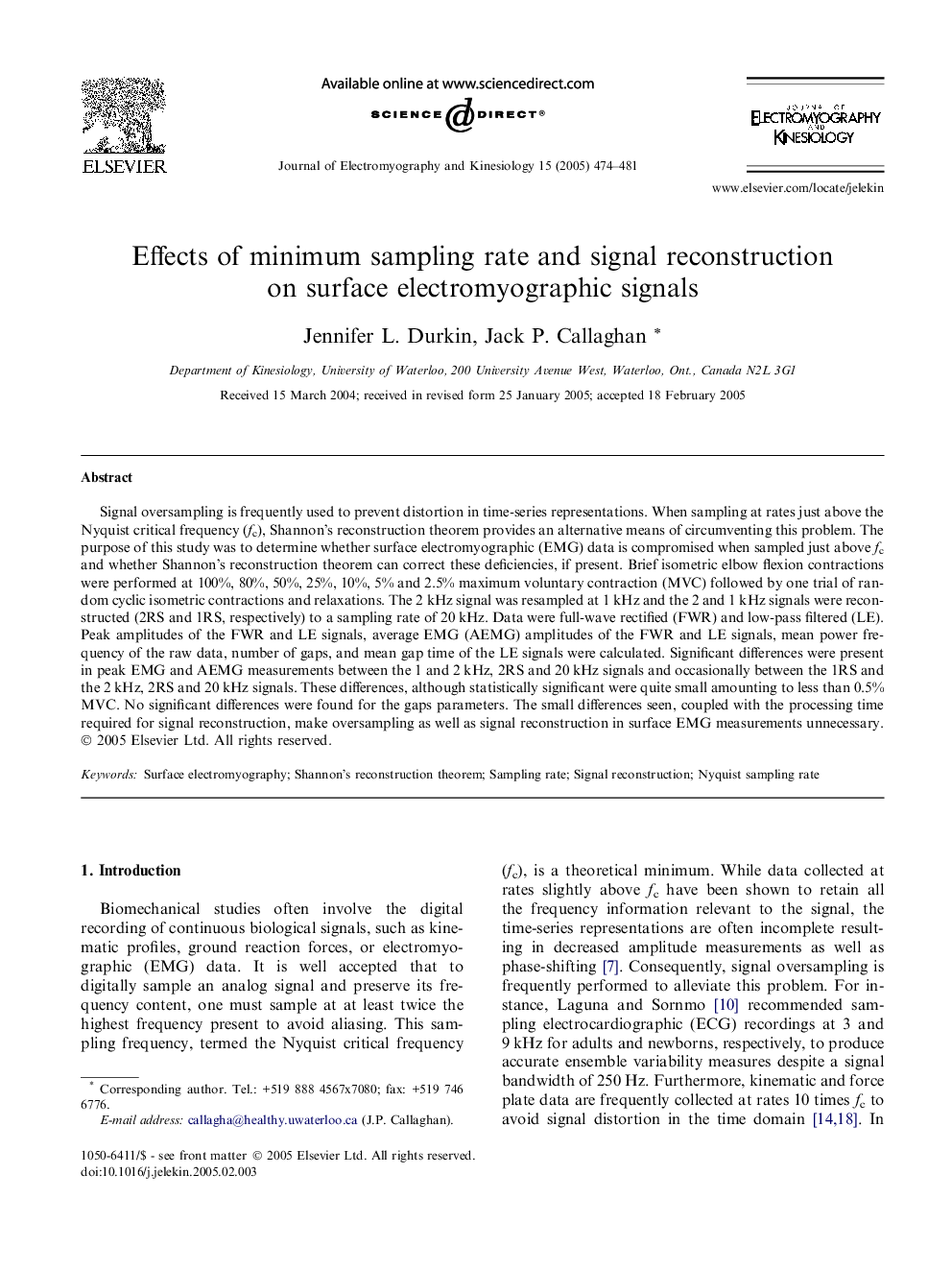| Article ID | Journal | Published Year | Pages | File Type |
|---|---|---|---|---|
| 9353656 | Journal of Electromyography and Kinesiology | 2005 | 8 Pages |
Abstract
Signal oversampling is frequently used to prevent distortion in time-series representations. When sampling at rates just above the Nyquist critical frequency (fc), Shannon's reconstruction theorem provides an alternative means of circumventing this problem. The purpose of this study was to determine whether surface electromyographic (EMG) data is compromised when sampled just above fc and whether Shannon's reconstruction theorem can correct these deficiencies, if present. Brief isometric elbow flexion contractions were performed at 100%, 80%, 50%, 25%, 10%, 5% and 2.5% maximum voluntary contraction (MVC) followed by one trial of random cyclic isometric contractions and relaxations. The 2Â kHz signal was resampled at 1Â kHz and the 2 and 1Â kHz signals were reconstructed (2RS and 1RS, respectively) to a sampling rate of 20Â kHz. Data were full-wave rectified (FWR) and low-pass filtered (LE). Peak amplitudes of the FWR and LE signals, average EMG (AEMG) amplitudes of the FWR and LE signals, mean power frequency of the raw data, number of gaps, and mean gap time of the LE signals were calculated. Significant differences were present in peak EMG and AEMG measurements between the 1 and 2Â kHz, 2RS and 20Â kHz signals and occasionally between the 1RS and the 2Â kHz, 2RS and 20Â kHz signals. These differences, although statistically significant were quite small amounting to less than 0.5% MVC. No significant differences were found for the gaps parameters. The small differences seen, coupled with the processing time required for signal reconstruction, make oversampling as well as signal reconstruction in surface EMG measurements unnecessary.
Related Topics
Health Sciences
Medicine and Dentistry
Orthopedics, Sports Medicine and Rehabilitation
Authors
Jennifer L. Durkin, Jack P. Callaghan,
